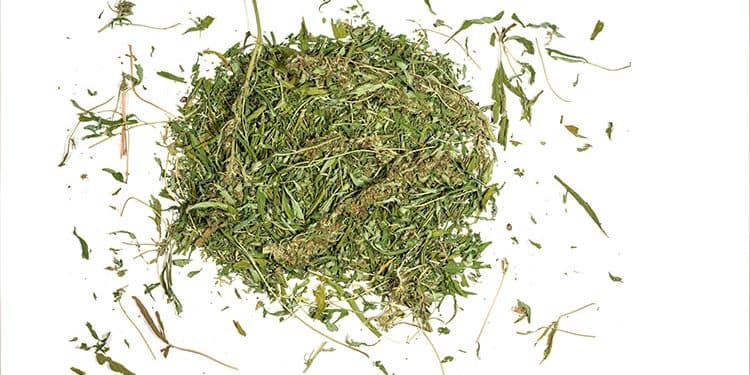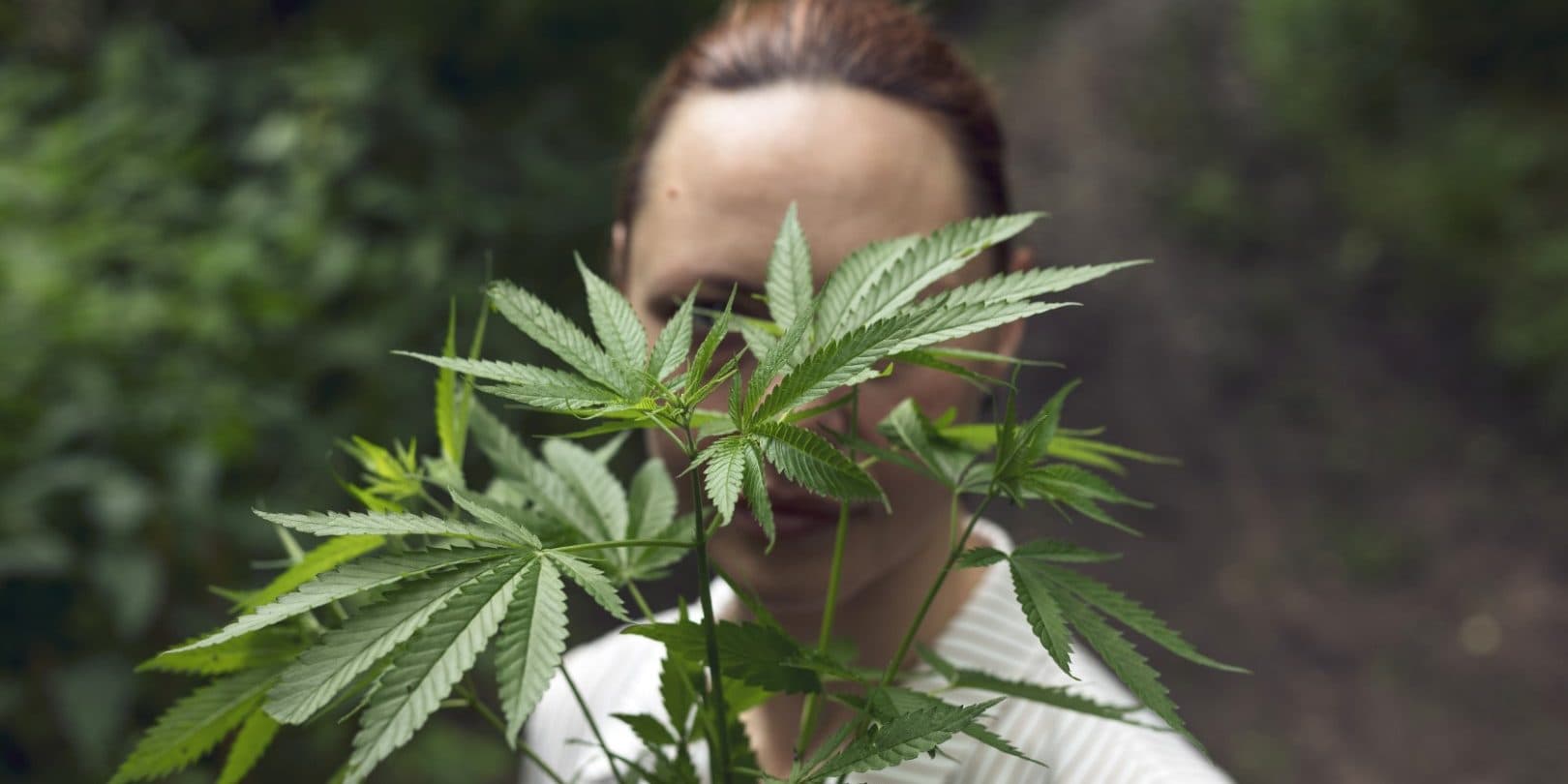Powered by Buddy
Menu
Powered by Buddy
Powered by Buddy
Menu
Powered by Buddy
How do you want to shop?
Blogs
Your Guide To Weed Stems
by All Greens Dispensary | June 8, 2025

You’ve used up all your current stash of cannabis flower, and now you’re looking at what’s left — a collection of stems. Before you simply toss out those stems, however, you can’t help wondering whether you can get some value out of that debris, either from any THC lurking within it or through some other application. Let’s take a look at these often-neglected bits of the cannabis plant and their potential uses. Like so many varieties of flora, the cannabis plant consists of multiple parts. However, only the female plants produce the THC-rich buds and flowers that cannabis users actually smoke. Other parts of the plant include trichomes (hair-like appendages that contain aromatic terpenes) and the strong, fibrous stems that support the plant. Both stems and seeds are traditionally thought of as throw-away components that don’t create a high or provide useful medical benefits. You might feel tempted to smoke your weed stems, but you really shouldn’t. For starters, weed stems contain so little THC that you can’t derive any noticeable benefits from smoking them as you would flowers. To make the prospect even less appealing, smoked stems taste and smell acrid, like burnt wood chips. Smoking them can cause coughing jags, a sore throat, and pounding headaches. It’s little wonder, then, why experienced marijuana users have grown accustomed to tossing these parts of the plant out with the garbage. Just because you can’t get any benefit from smoking weed stems, that doesn’t mean these plant pieces hold no value at all. Many people happen to enjoy the flavor and aroma of cannabis, no matter what part of the plant it comes from. If you’re one of those individuals, you can always brew your stems into a tea along with your favorite kinds of tea leaves. You can use stems to make your own cannabis-infused butter. Simply bake and grind the stems and then combine them with melted butter, straining this mixture and letting it cool. You can also infuse alcoholic beverages with stems, season your favorite dishes with them, or even mix them with alcohol and let the liquid evaporate in a pan until you can scrape away the residual hash. Of course, the whole question of what to do with weed stems is academic if you don’t have the necessary weed. If you’re looking for high-quality medical marijuana and you hold an Arizona medical marijuana card, explore our wide selection at All Greens Dispensary and place an order with us today!Weed Stems 101
What Are Weed Stems?
Why Shouldn’t You Smoke Weed Stems?
What Use Can You Get From Weed Stems?

Marijuana and Mental Health: Exploring its Potential for Easing Anxiety and Depression
In recent years, the conversation around marijuana has expanded beyond its recreational use to explore its potential therapeutic benefits, especially when it comes to mental health. As a leading voice in the cannabis community, All Greens Dispensary is committed to providing accurate information and insights into the evolving landscape of marijuana and its impact on various aspects of wellness. In this article, we delve into the relationship between marijuana and mental health, focusing on its potential to help with anxiety and depression. Anxiety and depression are two of the most common mental health challenges faced by people today. According to the World Health Organization, depression is the leading cause of disability worldwide, affecting more than 264 million people. Anxiety disorders, on the other hand, are estimated to impact around 284 million individuals. Both conditions can significantly impact one’s quality of life, making it essential to explore all available avenues for relief. While traditional treatments like therapy and medication remain crucial, many individuals are turning to alternative options such as medical marijuana. Marijuana contains compounds known as cannabinoids, with two primary players – tetrahydrocannabinol (THC) and cannabidiol (CBD) – grabbing most of the attention. These compounds interact with the endocannabinoid system, which plays a role in regulating various physiological processes, including mood and stress response. Research on the potential anti-anxiety effects of marijuana has yielded mixed results. While some individuals report feeling calmer and less anxious after consuming cannabis, others may experience increased anxiety or paranoia, particularly with high-THC strains. CBD, a non-intoxicating cannabinoid, is of particular interest due to its potential anxiolytic properties. Some studies suggest that CBD could help reduce anxiety by influencing serotonin receptors in the brain. The relationship between marijuana and depression is complex. While some users report temporary mood improvement after consuming cannabis, long-term and heavy use may actually increase the risk of developing or exacerbating depressive symptoms. The THC content in marijuana is thought to play a role in this, as high doses can potentially lead to cognitive impairment and negative mood effects. For individuals considering using medical marijuana to manage anxiety or depression, it’s essential to approach it with caution and under the guidance of a qualified healthcare professional. Factors such as the strain’s THC-to-CBD ratio, dosage, and individual tolerance can significantly impact the effects experienced. All Greens Dispensary places a strong emphasis on responsible and informed cannabis use. We recommend consulting with a healthcare provider before incorporating marijuana into your mental health regimen. Medical professionals can help you determine if cannabis is a suitable option based on your medical history, current medications, and individual needs.Understanding Anxiety and Depression
The Science Behind Marijuana and Mental Health
Marijuana and Anxiety
Marijuana and Depression
Finding the Right Balance
Consultation and Regulation
All Greens Dispensary & Your Cannabis Journey
While the potential of marijuana to alleviate anxiety and depression holds promise, it’s vital to acknowledge that its effects can vary widely among individuals. At All Greens Dispensary, we believe in providing accurate information to empower our community to make well-informed decisions about their health and wellness. If you’re considering using medical marijuana as part of your mental health management plan, remember that open communication with healthcare experts is key. Together, we can navigate the evolving landscape of cannabis and mental well-being. For more information and a range of responsibly cultivated cannabis products, contact us today!
All Greens Dispensary
June 5, 2025

The Cannabis User’s Guide to Head Highs and Body Highs
Medical science has come a long way in recognizing the many practical benefits of cannabis to treat a variety of health and wellness challenges, from chronic pain conditions to digestive troubles. But long before the doctors joined the cannabis bandwagon, individuals embraced the herb and its derivatives simply to get high. But what exactly does that mean? Would you prefer a head high or a body high, and what’s the difference anyway? Let’s explore these questions.
What Is a Head High?
Cannabis users describe a head high as one that affects your mental and emotional state more than your physical sensations or abilities. This kind of high may give you feelings of enhanced happiness, creativity, and energy that enhance your productivity, relationships, and motivation.
Head highs are commonly associated with sativa strains of the cannabis plant, although the other main category of plant, indica, can also produce or contribute to a head high. The presence of aromatic compounds called terpenes can also influence your head high. Limonene and caryophyllene are examples of terpenes that can give your mind and spirits a welcome rush of focus, energy, and poise.
What Is a Body High?
While a head high can get you going, a body high may stop you in your tracks — which might be perfect when you just want to chill out. Deep physical and mental relaxation is the name of the game here. Many cannabis veterans use the term “couch lock” to describe the feeling of just sitting immobile, with tingling extremities and a calm, untroubled mind. A serious case of the munchies can accompany a typical body high, so if you’re on a diet, you’ve been warned.
Indica strains have traditionally been known to produce a potent body high, although some sativa strains may induce lesser body-high effects as well. The main factor in this case is the presence of CBD alongside the THC in the indica. If you want to enhance your body high, look for (or add) terpenes such as myrcene, linalool, and pinene. Myrcene in particular is known as the “couch lock terpene.”
Find the Cannabis Strain That Meets Your Needs
Whether you want to expand your mind or relax your body, you’ll find the right solution for your needs here at All Greens Dispensary. We carry a full range of sativa, indica, and hybrid strains of cannabis products for both medicinal recreational use. Browse our recreational menu to find the product that will give you exactly the high you’re looking for!
All Greens Dispensary
June 8, 2025

Understanding Marijuana Tolerance: How It Develops and What It Means
As the use of marijuana becomes more widespread and accepted, understanding how it affects the body and how tolerance develops is crucial for both new and experienced users. Marijuana tolerance can impact the effectiveness of cannabis and influence how much and how often you consume it. At All Greens Dispensary, we believe in educating our customers about all aspects of cannabis use, including tolerance. Here’s a detailed look at how marijuana tolerance develops and what it means for you. Marijuana tolerance refers to a reduced response to cannabis after repeated use. This means that over time, you may need to consume larger amounts of marijuana to achieve the same effects you experienced initially. Tolerance develops because of changes in the brain’s endocannabinoid system, which is responsible for mediating the effects of THC (tetrahydrocannabinol), the primary psychoactive compound in cannabis. Marijuana tolerance develops through several biological mechanisms: THC interacts with the CB1 receptors in the brain, producing the psychoactive effects of cannabis. With repeated exposure to THC, the body compensates by reducing the number of CB1 receptors available—a process known as downregulation. Fewer receptors mean that the same amount of THC has less effect, leading to tolerance. In addition to downregulating CB1 receptors, chronic cannabis use can also lead to the desensitization of these receptors. This means that the receptors become less responsive to THC, requiring higher doses to achieve the desired effects. The body can also develop metabolic tolerance, where it becomes more efficient at breaking down and eliminating THC. This results in THC being less available to interact with CB1 receptors, necessitating higher doses to feel the same effects. Several factors can influence how quickly and to what extent marijuana tolerance develops: The more frequently you use marijuana, the faster tolerance is likely to develop. Regular daily use can lead to significant tolerance over time, while occasional use might result in slower tolerance development. Higher potency cannabis products with greater THC content can accelerate the development of tolerance. Using strong strains or concentrates regularly can lead to a quicker increase in tolerance compared to lower potency options. Each person’s body reacts differently to cannabis. Factors such as genetics, metabolism, overall health, and even mental state can influence how quickly tolerance develops. Some people may develop tolerance rapidly, while others might not experience it as significantly. Understanding how tolerance develops is important for managing your cannabis use effectively. Here are some strategies to manage and reset your tolerance: One of the most effective ways to reset your tolerance is by taking a break from cannabis use, often referred to as a “tolerance break” or “T-break.” A break of even a few days can help reduce tolerance levels, and a longer break can significantly reset your sensitivity to THC. Rotating different cannabis strains with varying levels of cannabinoids can help prevent the rapid development of tolerance. This approach keeps the endocannabinoid system engaged and responsive by avoiding consistent exposure to the same THC levels. Products that contain a balanced ratio of THC and CBD (cannabidiol) can help manage tolerance. CBD can modulate the effects of THC and may reduce the rate at which tolerance develops. Using cannabis in moderation can help prevent the rapid buildup of tolerance. Instead of consuming large quantities regularly, try smaller doses and less frequent use to maintain effectiveness without significantly increasing tolerance. Understanding and managing marijuana tolerance has several important implications: Higher tolerance means you need more cannabis to achieve the same effects, which can become costly over time. Managing tolerance helps you use cannabis more efficiently, reducing the amount needed and saving money. Consuming large amounts of cannabis to overcome tolerance can increase the risk of side effects, such as anxiety, paranoia, and cognitive impairment. Managing tolerance ensures you can enjoy the benefits of cannabis while minimizing potential risks. By managing your tolerance, you can maintain the effectiveness of cannabis and continue to experience its therapeutic and recreational benefits. A lower tolerance often means a more enjoyable and predictable experience. At All Greens Dispensary, we are dedicated to helping our customers make informed decisions about their cannabis use. Understanding how marijuana tolerance develops and learning to manage it can enhance your overall experience and ensure that you continue to enjoy the benefits of cannabis safely and effectively. Whether you’re a new user or an experienced enthusiast, our knowledgeable staff is here to provide guidance and support every step of the way. For more information or personalized advice on managing marijuana tolerance, visit All Greens Dispensary at our Sun City or Quartzsite locations, or reach out to us online. Let us help you achieve the best possible cannabis experience.What is Marijuana Tolerance?
How Does Marijuana Tolerance Develop?
Downregulation of CB1 Receptors
Desensitization of CB1 Receptors
Metabolic Tolerance
Factors Influencing Marijuana Tolerance
Frequency of Use
Potency of Cannabis
Individual Differences
Managing Marijuana Tolerance
Take a Tolerance Break
Rotate Strains
Use Products with Balanced Cannabinoids
Moderate Your Use
The Implications of Marijuana Tolerance
Cost Efficiency
Health and Safety
Enhanced Experience
Embrace an Informed Approach to Cannabis Use
All Green Dispensary
June 5, 2025
Menu




